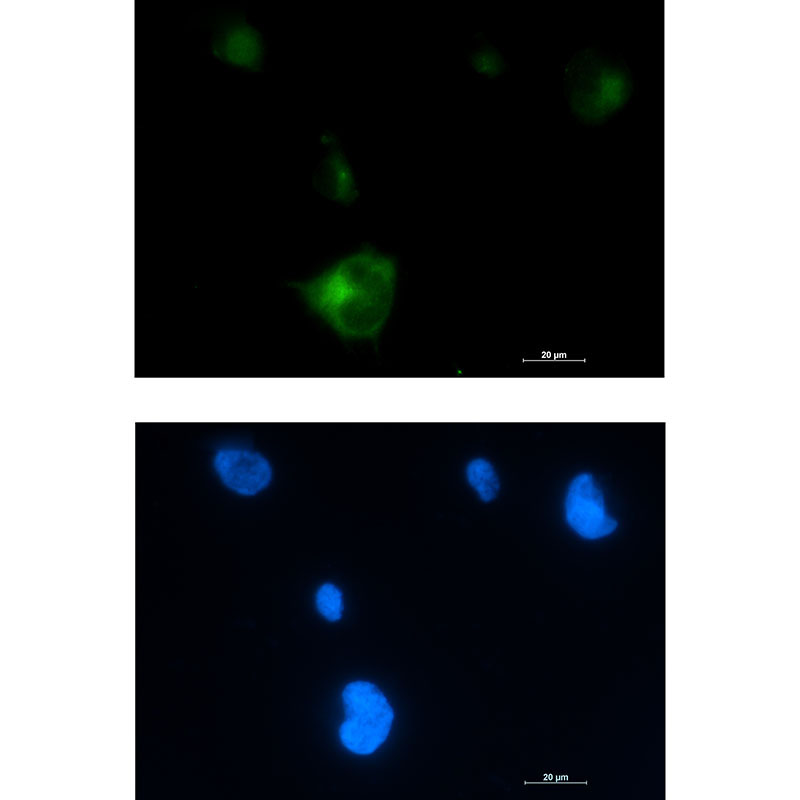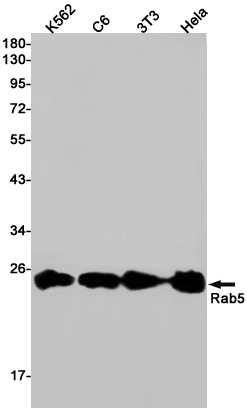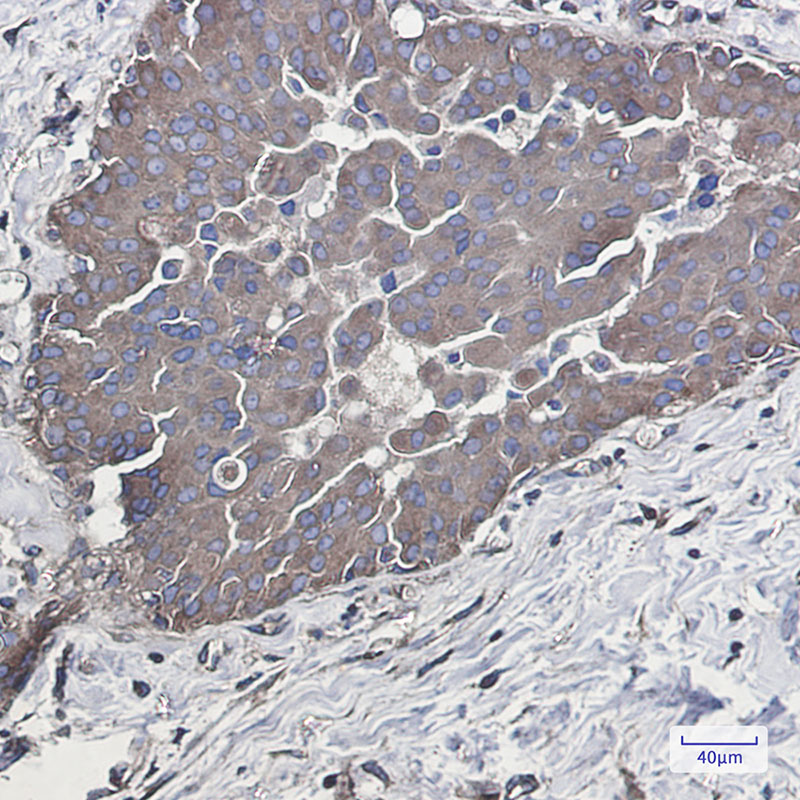


| WB | 1/500-1/1000 | Human,Mouse,Rat |
| IF | 1/20 | Human,Mouse,Rat |
| IHC | 1/50-1/100 | Human,Mouse,Rat |
| ICC | 1/50-1/200 | Human,Mouse,Rat |
| FCM | 咨询技术 | Human,Mouse,Rat |
| Elisa | 咨询技术 | Human,Mouse,Rat |
| Aliases | RAB5A; RAB5; RAS associated protein RAB5A; Ras related protein Rab 5A |
| Entrez GeneID | 5868 |
| WB Predicted band size | Calculated MW: 24 kDa; Observed MW: 24 kDa |
| Host/Isotype | Rabbit IgG |
| Antibody Type | Primary antibody |
| Storage | Store at 4°C short term. Aliquot and store at -20°C long term. Avoid freeze/thaw cycles. |
| Species Reactivity | Human,Mouse,Rat |
| Immunogen | A synthetic peptide of human Rab5 |
| Formulation | Purified antibody in TBS with 0.05% sodium azide,0.05%BSA and 50% glycerol. |
+ +
以下是关于Rab5抗体的3篇参考文献及其简要摘要:
---
1. **文献名称**: "Rab5 regulates motility of early endosomes on microtubules"
**作者**: Nielsen, E. et al.
**摘要**: 该研究使用特异性Rab5抗体结合免疫荧光技术,揭示了Rab5通过调控动力蛋白复合体,促进早期内体在微管上的定向移动,从而影响内吞运输效率。
2. **文献名称**: "Distinct roles of Rab5 and Rab7 in endosome maturation and degradation"
**作者**: Bucci, C. et al.
**摘要**: 通过Western blot和免疫沉淀实验,作者发现Rab5抗体可特异性识别早期内体中的Rab5蛋白,并证明Rab5向Rab7的转换是内体成熟的关键步骤,影响溶酶体降解途径。
3. **文献名称**: "Rab5-dependent autophagosome closure in neurodegenerative disease models"
**作者**: Ravikumar, B. et al.
**摘要**: 研究利用Rab5抗体阻断其功能,发现Rab5通过调控自噬体与内体膜融合,在阿尔茨海默病和亨廷顿病模型中影响异常蛋白聚集体的清除能力。
---
以上文献均聚焦于Rab5抗体在功能研究中的应用,涵盖内吞运输、内体成熟及疾病机制等领域。如需具体期刊信息或发表年份,可进一步补充关键词检索。
Rab5 antibodies are essential tools in cellular and molecular biology research, specifically targeting Rab5. a small GTPase belonging to the Rab family. Rab5 is a key regulator of early endosomal trafficking, playing a critical role in membrane fusion, vesicle transport, and the maturation of early endosomes. It cycles between an active GTP-bound state and an inactive GDP-bound state, orchestrating the recruitment of effector proteins involved in endocytosis and intracellular signaling. Dysregulation of Rab5 has been linked to various pathologies, including cancer, neurodegenerative diseases, and infectious processes.
Rab5 antibodies are designed to detect and quantify endogenous Rab5 proteins in experimental models. These antibodies are commonly used in techniques such as Western blotting, immunofluorescence, and immunohistochemistry to study Rab5 localization, expression levels, and interactions with other cellular components. Researchers often employ isoform-specific antibodies (e.g., targeting Rab5A, Rab5B, or Rab5C) to dissect functional differences between paralogs. Validation typically includes knockout controls or siRNA-mediated silencing to confirm specificity.
The development of high-affinity Rab5 antibodies has advanced studies on endosomal dynamics, receptor internalization, and autophagy. They are particularly valuable in exploring disease mechanisms, such as disrupted vesicular trafficking in Alzheimer’s disease or pathogen invasion strategies hijacking Rab5 pathways. Commercial antibodies vary in host species, clonality, and conjugation formats, enabling flexible experimental designs. Proper validation remains crucial to ensure reproducibility, given occasional cross-reactivity concerns within the Rab family.
×